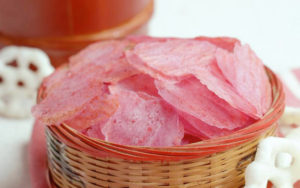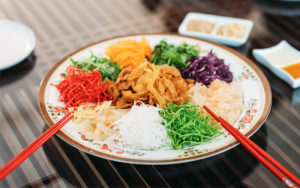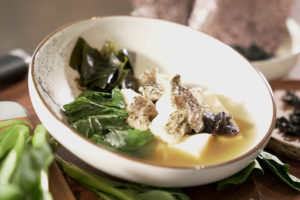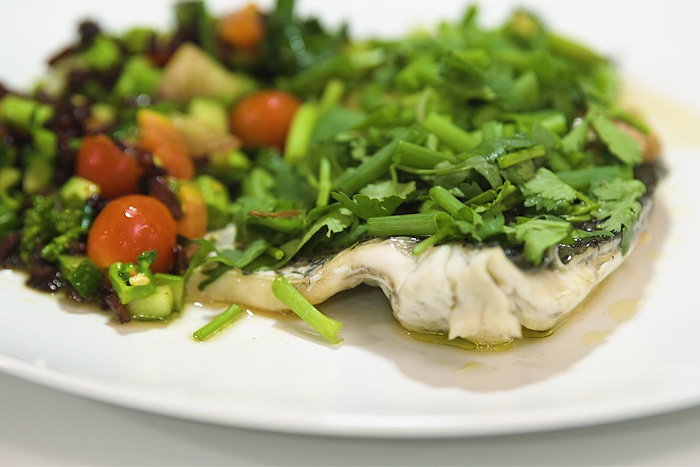Steamed Barramundi with Wild Rice Salad
Ingredients
Steamed Barramundi
Method
1 barramundi fillet
15g ginger, peeled and sliced thinly
1 tbs light soy sauce
1 tsp sesame oil
3 stalks coriander, chopped finely
2 stalks spring onions, chopped
Place the fish fillet in a dish, skin side up.
Place the ginger slices on top of the fish together with the coriander and spring onions.
Steam the fish for 15 minutes, remove from the steamer and drizzle the sesame oil over the hot fish.
Rice Salad
2 stalks kailan, chopped finely
100g long beans, chopped
5 cherry tomatoes, chopped
½ japanese cucumber, cut into small cubes
1 chilli, finely chopped
½ a red onion, chopped finely
1 cup cooked thai rice berry
Steam the kailan together with the fish for 5 minutes.
Add all the ingredients together in a bowl and dress it with the rice salad dressing. Serve together with the steamed fish.
Rice Salad Dressing
¼ tsp turmeric powder
1 tsp sea salt
½ tsp cracked black pepper
1 tbs lime juice
3 tbs extra virgin olive oil
Dietary Support for Detoxification
A diet that supports detoxification is important as this process occurs daily. Avoiding toxin consumption is one of the most important ways of reducing the accumulation of toxins in our bodies. The digestive tract exposes us to a large number of toxins and bacteria every day. Toxins can come from food packaging e.g. plastic containers and wraps, especially if they are subjected to high heat and if they are in close contact with food that is high in fat.
Large fish also contain more toxins than smaller fish, as toxins are often accumulated in an animal’s body as they age, very much like in humans. Choose foods that are grown organically or that require less pesticides e.g. fruit with thick skins or where the skins are not consumed, or clean them prior to eating. Tinned foods can also contain toxicants, so fresh produce is best.
Since we cannot avoid toxins completely, the next best thing we can do is to improve the conditions under which our bodies can carry out the process of detoxification. Hydration is important, as this improves the delivery of bodily fluids to our cells to carry toxins away from them, to be carried to the liver and kidneys to be excreted. Adequate hydration also improves the regularity of bowel movements, an important way by which the body excretes toxins that have been broken down. Adequate laxation also reduces the likelihood of the reabsorption of toxins from the bowel contents.
Supporting beneficial gut bacterial growth in the intestines is important. These gut bacteria are important for controlling the permeability of our intestines and reducing the movement of toxins and bacteria into the blood stream. These can tax the capacity of the liver in its ability to clear up these toxins quickly and adequately enough. Diets high in refined carbohydrates, sugar and processed fat tend to reduce the numbers of beneficial gut bacteria. Diets high in protein, omega-3-fatty acids, plant fibre and plant chemicals known as phytonutrients (what we might find in herbs, spices and cruciferous vegetables such as broccoli and kai lan) tend to improve the numbers of beneficial gut bacteria. These phytonutrients are also important in increasing the efficiency of the enzymes involved in detoxification.
Detoxification requires adequate amino acid intake, as well as plenty of antioxidants to quench the free radicals that are generated during the detoxification process. Having adequate protein at each meal, as well as lots of colourful fruit and vegetables are things that we can do to support the process of detoxification.

